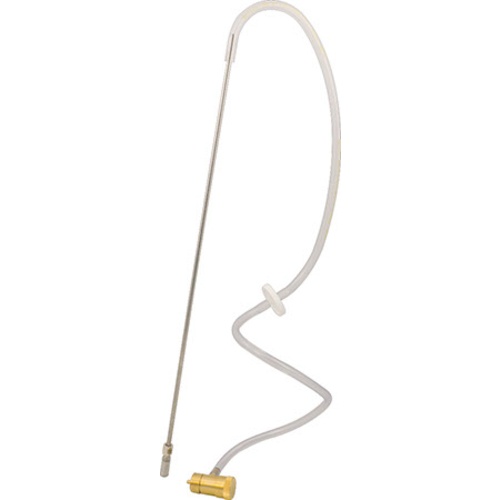At least train it once or twice before you'll actually need these skillsHmm.. I skimmed it on amazon, and looks a little too authentic for me. I don't see myself building a fire out of wood in the forest so I can boil some wort.
I think I'll save that for the post-apocalypse.
You are using an out of date browser. It may not display this or other websites correctly.
You should upgrade or use an alternative browser.
You should upgrade or use an alternative browser.
What's the best book on how to make mead?
- Thread starter NeverDie
- Start date

Help Support Homebrew Talk:
This site may earn a commission from merchant affiliate
links, including eBay, Amazon, and others.
growlrr
Well-Known Member
Throw in a bit of Black Plague or smallpox and you are 100% authentic!
Blacksmith1
Captain Cheap
It's a good read but almost no info on modern techniques. You ask for the best book, not the one with the best info.
Stirring is really what we mean when we say degassing/aerating. The idea here is to rouse the yeast from the bottom in the carboy so that it doesn’t get buried, lazy, and give up on making alcohol. At the same time, this removes CO2 from the must and adds some oxygen to encourage yeast health. It’s not as complete as true degassing or aeration, but good enough to improve the overall health of the ferment.
I have been a big fan of what I like to call the "Shake the $*!T out of it" method of degassing. My thought on this would be that it really is more pure degassing, as there should be little to no oxygen in the headspace after fermentation becomes active. I would say as well, this certainly rouses the yeast.
I oxygenate at the start of fermentation using pure oxygen and a diffusing stone, and I do believe this is an extremely important part of fermentation management. My understanding has been, however, that oxygen after the initial aerobic yeast metabolism and cell division, oxygen is not necessary, and may even be detrimental.
Here's my question though, and it comes from your statement regarding "adds some oxygen to encourage yeast health:" Is there some actual *need* for the yeast to have access to oxygen after the initial stages of fermentation?
NeverDie
Well-Known Member
I have been a big fan of what I like to call the "Shake the $*!T out of it" method of degassing. My thought on this would be that it really is more pure degassing, as there should be little to no oxygen in the headspace after fermentation becomes active. I would say as well, this certainly rouses the yeast.
I oxygenate at the start of fermentation using pure oxygen and a diffusing stone, and I do believe this is an extremely important part of fermentation management. My understanding has been, however, that oxygen after the initial aerobic yeast metabolism and cell division, oxygen is not necessary, and may even be detrimental.
Here's my question though, and it comes from your statement regarding "adds some oxygen to encourage yeast health:" Is there some actual *need* for the yeast to have access to oxygen after the initial stages of fermentation?
I haven't experimented much with the "Shake the $*!T out of it" method, but how do totally avoid creating a geyser when you "Shake the $*!T out of it"? Is it a multi-step shake, starting with a little shake and then building up to "Shake the $*!T out of it"?

$33.99 ($17.00 / Count)
$41.99 ($21.00 / Count)
2 Pack 1 Gallon Large Fermentation Jars with 3 Airlocks and 2 SCREW Lids(100% Airtight Heavy Duty Lid w Silicone) - Wide Mouth Glass Jars w Scale Mark - Pickle Jars for Sauerkraut, Sourdough Starter
Qianfenie Direct

$53.24
1pc Hose Barb/MFL 1.5" Tri Clamp to Ball Lock Post Liquid Gas Homebrew Kegging Fermentation Parts Brewer Hardware SUS304(Liquid Hose Barb)
yunchengshiyanhuqucuichendianzishangwuyouxiangongsi

$53.24
1pc Hose Barb/MFL 1.5" Tri Clamp to Ball Lock Post Liquid Gas Homebrew Kegging Fermentation Parts Brewer Hardware SUS304(Gas MFL)
Guangshui Weilu You Trading Co., Ltd
![Craft A Brew - Safale S-04 Dry Yeast - Fermentis - English Ale Dry Yeast - For English and American Ales and Hard Apple Ciders - Ingredients for Home Brewing - Beer Making Supplies - [1 Pack]](https://m.media-amazon.com/images/I/41fVGNh6JfL._SL500_.jpg)
$6.95 ($17.38 / Ounce)
$7.47 ($18.68 / Ounce)
Craft A Brew - Safale S-04 Dry Yeast - Fermentis - English Ale Dry Yeast - For English and American Ales and Hard Apple Ciders - Ingredients for Home Brewing - Beer Making Supplies - [1 Pack]
Hobby Homebrew

$479.00
$559.00
EdgeStar KC1000SS Craft Brew Kegerator for 1/6 Barrel and Cornelius Kegs
Amazon.com

$20.94
$29.99
The Brew Your Own Big Book of Clone Recipes: Featuring 300 Homebrew Recipes from Your Favorite Breweries
Amazon.com

$22.00 ($623.23 / Ounce)
AMZLMPKNTW Ball Lock Sample Faucet 30cm Reinforced Silicone Hose Secondary Fermentation Homebrew Kegging joyful
无为中南商贸有限公司

$7.79 ($7.79 / Count)
Craft A Brew - LalBrew Voss™ - Kveik Ale Yeast - For Craft Lagers - Ingredients for Home Brewing - Beer Making Supplies - (1 Pack)
Craft a Brew

$10.99 ($31.16 / Ounce)
Hornindal Kveik Yeast for Homebrewing - Mead, Cider, Wine, Beer - 10g Packet - Saccharomyces Cerevisiae - Sold by Shadowhive.com
Shadowhive

$58.16
HUIZHUGS Brewing Equipment Keg Ball Lock Faucet 30cm Reinforced Silicone Hose Secondary Fermentation Homebrew Kegging Brewing Equipment
xiangshuizhenzhanglingfengshop

$176.97
1pc Commercial Keg Manifold 2" Tri Clamp,Ball Lock Tapping Head,Pressure Gauge/Adjustable PRV for Kegging,Fermentation Control
hanhanbaihuoxiaoshoudian

$39.22 ($39.22 / Count)
Brewer's Best Home Brew Beer Ingredient Kit - 5 Gallon (Mexican Cerveza)
Amazon.com
one of these on a drill ...

or one of these...

and some O2


or one of these...

and some O2

I haven't experimented much with the "Shake the $*!T out of it" method, but how do totally avoid creating a geyser when you "Shake the $*!T out of it"? Is it a multi-step shake, starting with a little shake and then building up to "Shake the $*!T out of it"?
Yeah, that's a risk...exactly as you say, I do indeed build up to it. However, on top of it, I also use a blow off tube for all my fermentations, so even if I gyser a bit, it's contained...
Similar threads
- Replies
- 13
- Views
- 2K















































